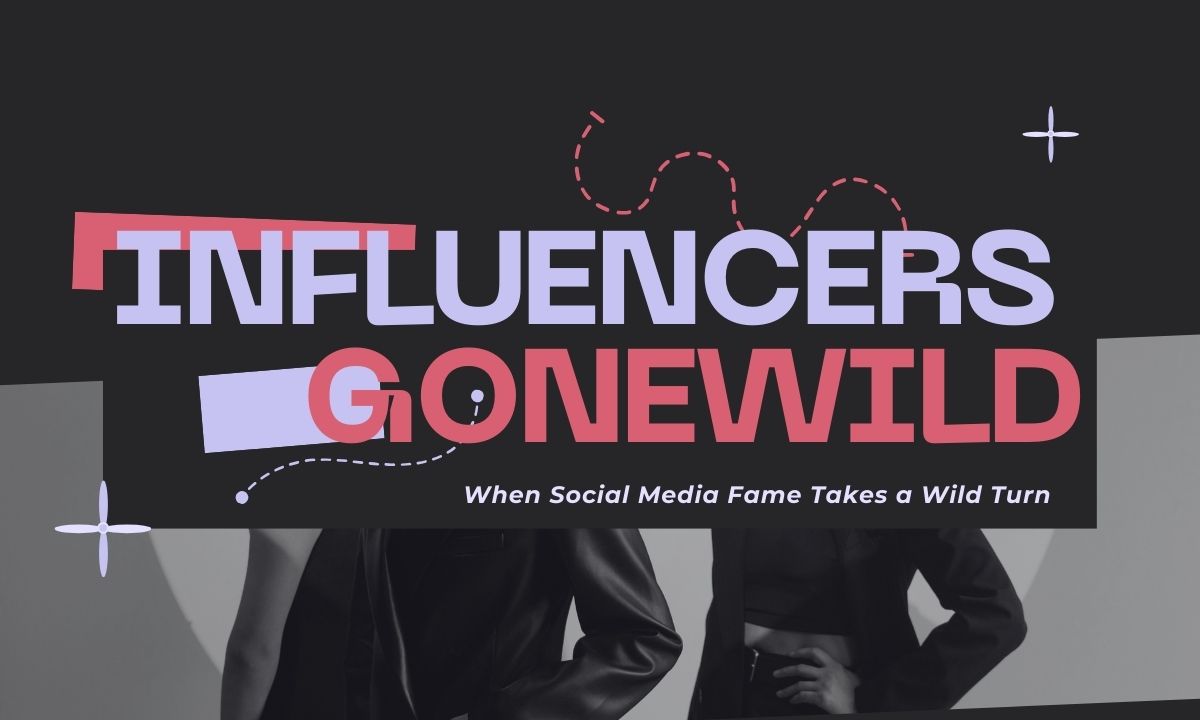The digital age has birthed a new breed of celebrity—the social media influencer. These individuals have amassed colossal followings by showcasing lifestyles, products, and personalities that captivate global audiences. However, the story isn’t all glitz and glam. Increasingly, we witness influencers gone wild, a phenomenon where fame, wealth, and unchecked freedom catalyze controversy, scandal, and public backlash.
This exposé dives deep into the anatomy of influencer culture gone rogue, the psychology behind their implosions, the damage to brands, and what it means for the future of online influence.
The Rise of the Influencer: A New Power Class
Over the past decade, platforms like Instagram, TikTok, YouTube, and OnlyFans have redefined fame. Individuals who once needed a movie deal or record label now build multimillion-dollar careers from their bedrooms.
These digital tastemakers influence public opinion, shape trends, and command enormous advertising dollars. With follower counts in the millions, some influencers earn six to seven figures annually through brand endorsements, affiliate marketing, merchandise, and subscription content.
But this rapid ascent comes with high stakes. Many influencers, unchecked by traditional PR training or ethical oversight, become their own worst enemies.
Influencers Gone Wild: Public Scandals and Meltdowns
1. Content Controversies
From cultural appropriation to insensitive jokes, influencers have faced backlash for posting content that is tone-deaf or offensive. Logan Paul’s infamous “suicide forest” video, for example, sparked global outrage and highlighted the consequences of chasing views at any cost.
TikTok stars have also stirred controversy by participating in dangerous trends, spreading misinformation, or engaging in questionable behavior while live streaming.
2. Brand Collapses and Sponsorship Losses
When influencers misbehave, the fallout is swift. Brands withdraw partnerships, fans unsubscribe, and public opinion sours. Laura Lee, once a beauty YouTuber with top-tier brand deals, saw her empire crumble after racist tweets resurfaced. Her subscriber count plummeted, and sponsors dropped her within days.
James Charles, another beauty mogul, has faced multiple allegations ranging from grooming to professional misconduct, triggering boycotts and causing massive brand retreats.
3. Legal Troubles and Lawsuits
With great power comes great liability. Several influencers have been sued for fraud, defamation, or false advertising. The Fyre Festival fiasco, amplified by influencer promotion, led to federal charges and class-action lawsuits. Those who endorsed the doomed event without disclosing payment faced scrutiny from the Federal Trade Commission (FTC).
OnlyFans creators have also found themselves in hot water—some for breaking platform rules, others for engaging in explicit conduct that pushes the limits of legality.
The Psychology Behind the Meltdowns
Fame without structure can be psychologically destabilizing. Many influencers:
Lack boundaries between personal and public life
Face intense pressure to constantly create viral content
Experience parasocial relationships with followers, creating an illusion of intimacy that often backfires
Develop narcissistic behaviors, believing they are untouchable due to their follower count
These dynamics, combined with youth and inexperience, often result in burnout, breakdowns, or self-destructive decisions made under the spotlight.
When Fans Turn: Cancel Culture in Action
The very audiences that elevate influencers can just as easily dismantle their careers. “Cancel culture” is now a fixture of internet life, where users organize boycotts or public callouts when influencers cross ethical or social boundaries.
Some examples include:
Jeffree Star’s racial slurs resurfacing, prompting mass unfollows
David Dobrik’s association with assault allegations, resulting in major ad revenue loss
Nikocado Avocado’s decline, where his persona shifted from entertaining to disturbing, alienating both viewers and sponsors
Reddit threads, Twitter callouts, and YouTube exposés serve as judge, jury, and executioner. While some influencers recover, others vanish entirely.
Brands Beware: The Cost of Associating with Wild Influencers
Brands have learned hard lessons about influencer vetting. A single scandal can tarnish a brand’s image for years.
Companies now invest in influencer auditing, analyzing everything from follower authenticity to political views before signing a contract. They also include morality clauses in contracts, giving them the right to cut ties when influencers misbehave.
Some brands, like Morphe, faced backlash themselves for continuing partnerships with controversial figures, resulting in boycotts and declining sales.
Influencer Redemption Arcs: Can They Bounce Back?
Some influencers have staged remarkable comebacks. The blueprint often includes:
A tearful apology video
A social media break
Philanthropic efforts or rebranding
Collaboration with unproblematic creators
However, audiences are increasingly skeptical. Authenticity is now judged by consistency over time, not a single apology.
Examples of partial or full redemption:
James Charles, while still controversial, regained followers after laying low
Tana Mongeau, once criticized for her wild persona, has pivoted toward business and lifestyle content
Trisha Paytas, a chronic provocateur, reinvented herself with spiritual and family-focused content
OnlyFans and the Rise of Unfiltered Influencers
OnlyFans has further blurred the lines between influencer and adult performer. While it provides autonomy and income for creators, it also subjects them to intense scrutiny.
Some influencers have pushed the envelope too far, leading to bans, lawsuits, and tarnished reputations. Others, like Bad Baby (Bhad Bhabie) and Bella Thorne, made millions overnight, only to face backlash for misleading content and policy violations.
The platform remains a double-edged sword—profitable, but perilous.
What’s Next for Influencer Culture?
As influencers continue to dominate digital culture, a reckoning is underway. Platforms are enforcing stricter community guidelines, audiences are demanding greater transparency, and brands are becoming less tolerant of scandal.
We expect to see:
A rise in micro-influencers with niche, loyal followings
Greater demand for authentic, value-driven content
Increased regulation around ad disclosures and platform behavior
More creators seeking mental health support to navigate fame
Conclusion
The tale of influencers gone wild is both cautionary and compelling. As fame becomes democratized, the responsibility to wield it wisely becomes more vital. What we witness today is not the death of influencer culture, but its evolution—toward accountability, maturity, and sustainability.





